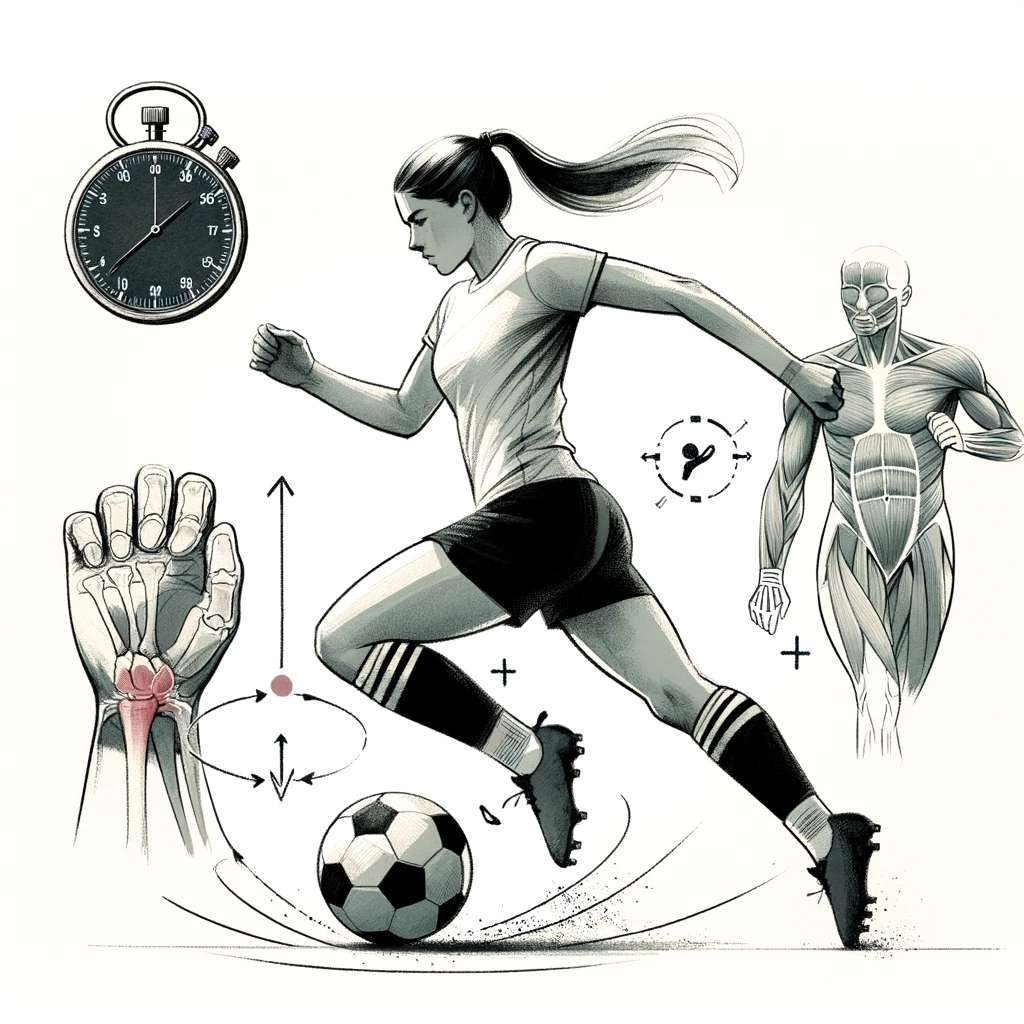
Unveiling the Link Between Physical Fitness, Skill, and Injury Prevention in Female Players
Soccer is not just a game of skill and strategy but a symphony of physical prowess, agility, and technique. The recent study, “Relationships between physical fitness characteristics, technical skill attributes, and sports injury in female Australian football players”, sheds light on the crucial aspects of physical fitness and their impact on technical skills and injury prevention in female soccer players. As a soccer coach or enthusiast, understanding these relationships can be transformative in enhancing player development and reducing injury risks.
Unraveling the Study: Key Findings
1. Physical Fitness and Skill Proficiency
- Vertical Jump Height, Hip Abduction Strength, and Hop Speed: These attributes were significantly related to kicking accuracy, implying a stable support leg is crucial for better control and foot speed during the kicking phase.
- Agility and Lean Mass: These characteristics were associated with handballing accuracy, highlighting the importance of agility and muscle mass in maneuvering tight, congested game situations.
2. Injury Prevention and Physical Fitness
- Surprisingly, players with lower hip abduction, knee extension, and knee flexion strength had a reduced injury risk. This could imply that these players avoid high-impact, injury-prone situations.
- Agility emerged as a critical factor, with less agile players facing a higher risk of injuries. This highlights the need for agility training in injury prevention programs.
Implications for Soccer Coaching and Player Development
The implications of this study for soccer coaching and player development are multifaceted. In terms of enhancing technical skills, coaches are encouraged to concentrate on developing specific physical fitness attributes. For instance, improving jump height and agility can directly impact a player’s proficiency in technical skills such as kicking and handballing. This targeted training approach ensures that each player’s unique physical capabilities are being developed in a way that directly enhances their on-field skills.
When it comes to younger players, the study suggests that a focus on strength and body composition training could be more beneficial. This tailored approach could help in honing their kicking accuracy, a vital skill in soccer. As these young athletes grow and develop, the training can adapt to their changing physical needs, ensuring continuous improvement in their technical abilities.
On the front of reducing injury risks, the study brings to light the importance of customized agility training. By incorporating specific agility drills into the training regime, coaches can significantly lower the risk of injuries, especially among less agile players. This proactive approach not only enhances the players’ agility but also contributes to their overall fitness and game-readiness.
Moreover, a deeper understanding of injury dynamics is crucial for effective training. Coaches must recognize that lower strength does not necessarily translate to a higher injury risk. This understanding leads to the development of well-rounded training programs that focus not just on enhancing strength but on overall fitness and skill development. Such a holistic approach to training can play a pivotal role in reducing injury risks while simultaneously improving the players’ technical and physical capabilities in the game of soccer.
The Future of Soccer Coaching
This study underscores the need for a holistic approach in coaching, where physical fitness is not just about strength and endurance but also about enhancing technical skills and minimizing injury risks. Coaches and trainers must adapt their methodologies to cater to these findings, ensuring a more effective and safer environment for player development.
Final Thoughts
For anyone involved in soccer coaching or playing, this study is a treasure trove of insights. It challenges traditional notions of physical fitness and opens new avenues for skill enhancement and injury prevention. By integrating these findings into training regimes, the future of women’s soccer looks not only promising but also safer and more skill-oriented.
Elevate your understanding of the beautiful game with ‘This Week in Soccer’.
Dive into a world where soccer science and strategy come alive. Subscribe now to our newsletter and be part of a community that transforms theoretical knowledge into practical mastery. Don’t miss out on the chance to access groundbreaking insights and redefine your approach to soccer. Subscribe today!



